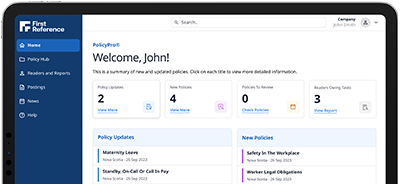
New statutory requirements for Ontario employers heading into 2025
Vey Willetts LLP
During 2024, the Ontario provincial government made several changes to the Employment Standards Act, 2000 (“ESA”). Among other things, the province introduced requirements around job postings, mandated the information employers are to provide to incoming staff, restricted when medical notes may be requested, and created new (yet to be in force) forms of job-protected leave.
With these changes coming in quick succession (with varying requirements and effective dates), it can be a challenging time as an employer.
While this article is non-exhaustive (and employers should speak with an experienced employment lawyer), it offers an overview of major changes that have just arrived, or will soon be here:
Restriction on medical note requests
The province amended the ESA effective October 28, 2024, to prohibit employers from requiring employees to provide a medical note from a “qualified health practitioner” as a precondition to taking sick leave under the statute.
Notwithstanding this general prohibition, employers may still seek a medical note where it is “reasonable in the circumstances.” It remains to be seen what will meet this limited exception. An employer that requires a medical note, however, should have a defensible rationale for doing so and, in accordance with new ESA restrictions, limit the information being sought to: the duration of the expected absence; the date the individual was seen by their health care provider; and whether the individual was examined in person by the health care professional issuing the note.
Job posting requirements
As of January 1, 2026, all provincially-regulated employers with at least 25 employees will be required to ensure their publicly-advertised postings for jobs in Ontario:
- state the expected compensation range (unless in excess of $200,000 per year);
- include a compensation range of no more than $50,000 per year (thus requiring a degree of specificity);
- avoid any requirement for “Canadian experience”;
- include a statement on whether the posting is for an existing vacancy; and
- disclose the use of artificial intelligence (“AI”) to screen, assess, or select applicants.
On this last point, employers should exercise caution in using AI. Any AI system should be carefully reviewed to ensure it will not screen out, or deprioritize, applicants on the basis of a ground protected by applicable human rights laws (i.e., it weeds out female applicants, or those perceived to be “old”). A failure to ensure AI systems are not informed by bias may result in unintended liability and, from a practical standpoint, lead to an employer missing out on well-qualified candidates.
In addition to the content of the job posting itself, prescribed employers will also need to inform individuals interviewed for a role (within 45 days of their last interview) whether a hiring decision was made and keep copies of job posting for 3 years after they are taken down.
Employment information
As of July 1, 2025, employers with at least 25 staff, will be required to provide all new employees with the following information in writing:
- the employer’s legal name (and operating name if different);
- contact information (address, phone, and a point of contact);
- where it is anticipated the individual will work (i.e., location);
- the individual’s starting hourly wage rate (or salary) and applicable pay period; and
- a description of the anticipated hours of work (i.e., full-time etc.).
This seemingly innocuous requirement — which is aimed at providing greater transparency has — the potential to cause problems for employers.
For example, if a business sends an email to an individual offering employment (setting out the above information and nothing further), and the individual accepts, an employment contract will have been established.
Thus, if the employer were to then follow up with a “more formal” employment agreement for the individual to sign, without offering anything new in exchange for doing so, the contract (which may contain restrictive covenants and termination provisions on which the employer intends to rely) is likely to be unenforceable for want of consideration. In practical terms, this means that because the individual already had the job, they are simply taking on new obligations without receiving anything new to their own benefit.
To minimize this risk, employers may want to either provide the full employment agreement from the outset, or extend a conditional offer, setting out the ESA-required information, and noting that an employment agreement (containing restrictive covenants, etc.) will follow and must be signed as a precondition to starting work.
Placement of a child leave
The Working for Workers Six Act, 2024, which received Royal Assent on December 19, 2024, will introduce (at a yet to be determined date) a new form of job-protected leave available to employees going through the adoption or surrogacy process (and who have at least 13 weeks of tenure).
It will allow eligible staff to take up to 16 weeks off work without pay so as to be able to bond with and welcome the child to their new home. This leave is to be taken in a single period and will look to align with federal changes to the Employment Insurance benefits scheme for workers who become new parents through adoption or surrogacy.
Long term illness leave
As of June 19, 2025, the Working for Workers Six Act, 2024, will provide eligible employees the right to take up to 27 weeks of unpaid leave (one of the longest forms of leave in Canada) to address serious illnesses. This job-protected leave aims to allow individuals the opportunity to receive treatment and recover before returning to work – without the worry of their job remaining secure.
This extended right to job-protected leave helps to, in effect, codify the pre-existing employer obligation to reasonably accommodate illness under applicable human rights law.
2025 looks set to be a period of continued change. Ontario employers should be sure to diarize the upcoming changes and take steps in advance of implementation to ensure their processes, contracts, and operational plans remain statutorily compliant and fit-for-purpose.
By Paul Willetts
Table of Contents
Compliance Made Easy®

